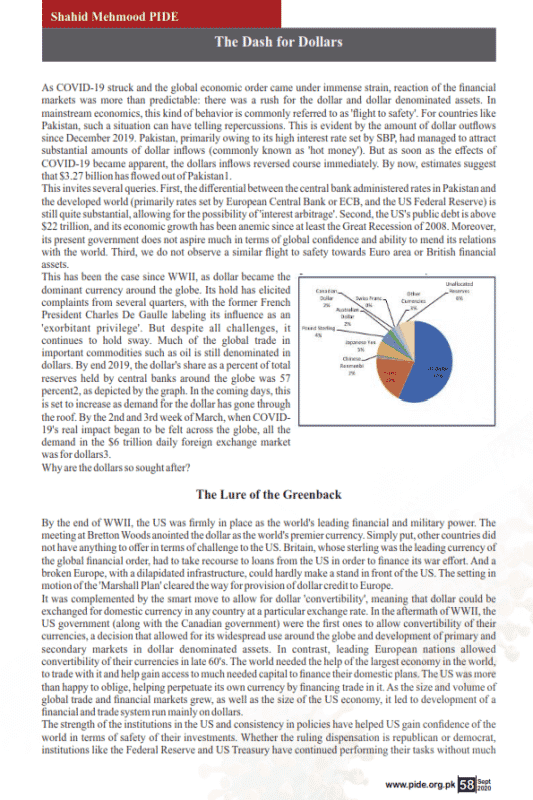
Pakistan Institute of Development Economics
- Home
Our Portals
MenuMenuMenuMenuMenuMenuMenu - ResearchMenuMenuMenuMenuMenuMenuMenu
- Discourse
- The PDR
- Our Researchers
- Academics
- Degree Verification
- Thesis Portal
- Our Portals
The Dash for Dollars (P & R Vol.1 Issue 1)
As COVID-19 struck and the global economic order came under immense strain, reaction of the financial markets was more than predictable: there was a rush for the dollar and dollar denominated assets. In mainstream economics, this kind of behavior is commonly referred to as ‘flight to safety’. For countries like Pakistan, such a situation can have telling repercussions. This is evident by the amount of dollar outflows since December 2019. Pakistan, primarily owing to its high interest rate set by SBP, had managed to attract substantial amounts of dollar inflows (commonly known as ‘hot money’). But as soon as the effects of COVID-19 became apparent, the dollars inflows reversed course immediately. By now, estimates suggest that $3.27 billion has flowed out of Pakistan1. This invites several queries. First, the differential between the central bank administered rates in Pakistan and the developed world (primarily rates set by European Central Bank or ECB, and the US Federal Reserve) is still quite substantial, allowing for the possibility of ‘interest arbitrage’. Second, the US’s public debt is above $22 trillion, and its economic growth has been anemic since at least the Great Recession of 2008. Moreover, its present government does not aspire much in terms of global confidence and ability to mend its relations with the world. Third, we do not observe a similar flight to safety towards Euro area or British financial assets.



